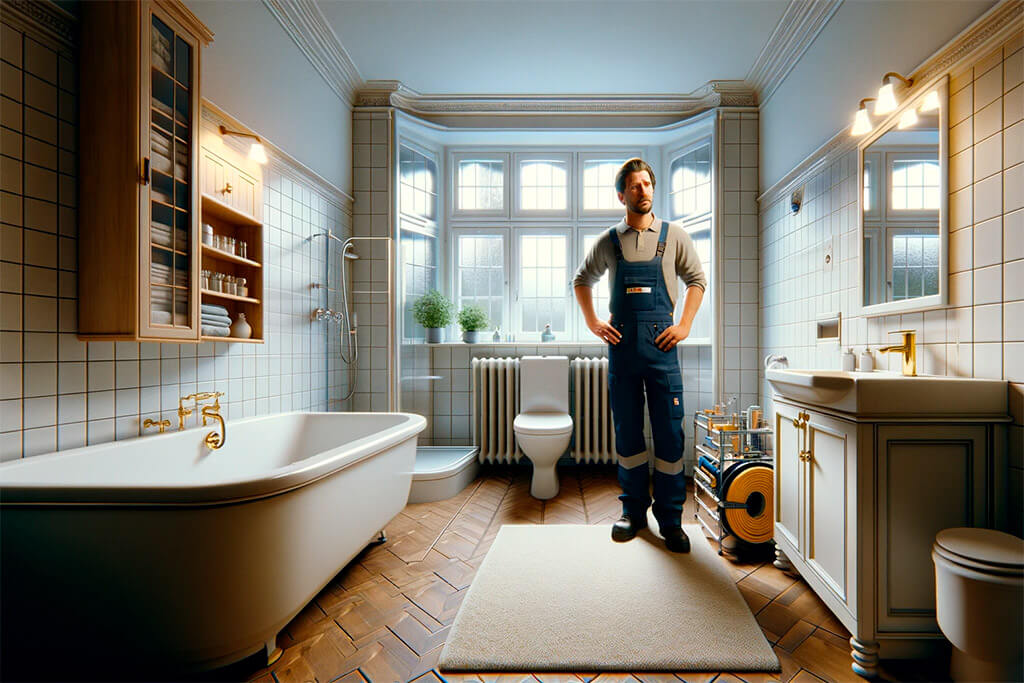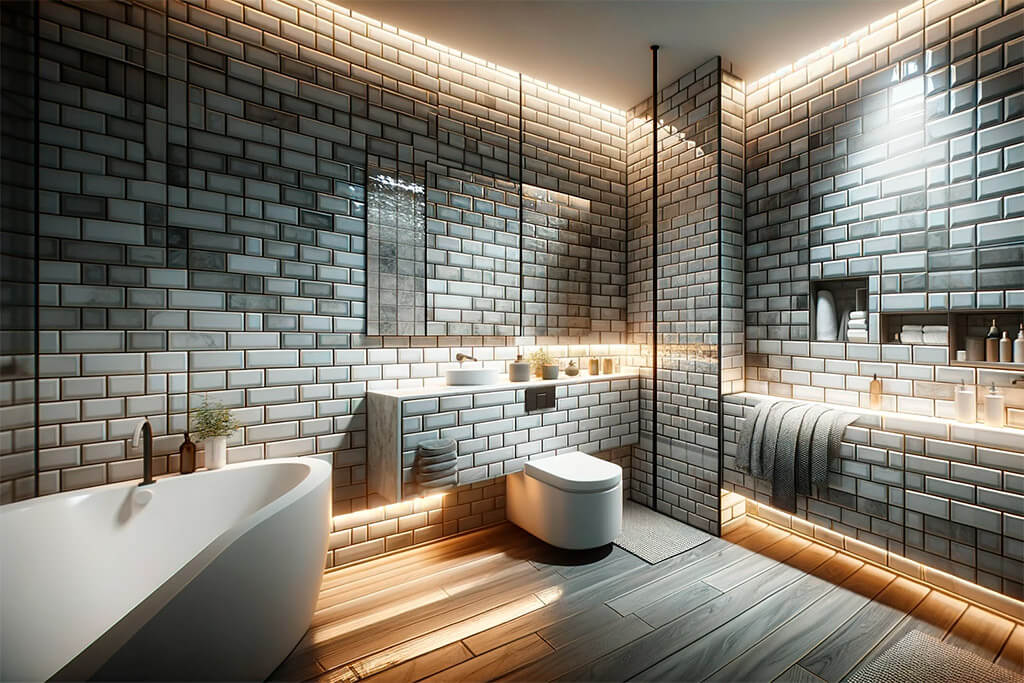Welcome, fellow builders and determined DIYers. In the realm of home construction, few elements are as foundational as a robust plumbing system. It’s more than ensuring a steady stream of water or a functional sewer line, it’s about crafting a system that stands the test of time, supports the home’s functionality, and provides comfort and convenience for all its inhabitants.
In this guide, we’ll embark on a comprehensive journey through the process of plumbing a house. This guide is meticulously crafted, designed to serve the ambitious weekend DIYer and the seasoned, self-employed construction expert alike. Let’s begin this essential journey into the world of plumbing.

Understanding Plumbing Basics
Diving into the essentials, a home’s plumbing system serves as its circulatory system, composed of intricate pathways designed to deliver fresh water and dispose of waste efficiently. The main protagonists in this narrative are the water supply and drainage systems. The supply system harnesses pressure to bring fresh water in, while the drainage system uses gravity’s pull to escort waste water out.
Yet, before pipes are laid and connections are made, it’s paramount to acquaint oneself with the local building codes and standards. These aren’t bureaucratic hurdles but safeguards, ensuring your plumbing system is safe, efficient, and up to the task.
When it comes to tools and materials, we spotlight PEX plumbing – cross-linked polyethylene. This material is a favorite in modern plumbing for its remarkable flexibility, resilience, and ease of installation, setting the stage for a robust and reliable plumbing infrastructure.
Planning Your Plumbing System
Careful planning is the cornerstone of any successful plumbing project. It begins with a comprehensive diagram, a detailed blueprint outlining the journey of every pipe, the location of each fixture, and the intersection of every joint.
Keep these critical considerations in mind:
- Water Supply: Identify the entry point of your main water line and chart its course to each fixture, ensuring a reliable supply throughout the house.
- Drainage System: Strategically plan the waste’s exit route from your home, ensuring a smooth, uninterrupted flow, guided by gravity’s reliable hand.
- Efficiency and Repair: Intelligently position your pipes to balance optimal functionality with accessibility, paving the way for easier maintenance and swift repairs.

Installing the Plumbing System
With meticulous planning behind us, we roll up our sleeves and step into the realm of installation, transforming plans into tangible reality.
- Laying the Groundwork: Begin by establishing the foundational network of underground pipes, especially crucial in new constructions, setting the stage for the entire plumbing system.
- Running PEX Piping: The versatility of PEX piping shines in its installation, allowing for a fluid, seamless route through walls and floors, minimizing the need for fittings and maintaining water pressure integrity.
- Joining PEX Pipes: While this step requires specialized tools, the investment pays dividends in ensuring durable, leak-resistant connections, a testament to the reliability of your plumbing system.
- Fixtures and Appliances: The final act involves installing fixtures – the sinks, toilets, and showers – and connecting appliances such as water heaters and washing machines, with a vigilant eye for potential leaks.
Testing and Troubleshooting
Let’s turn our attention to the critical post-installation phase, where meticulous testing and keen troubleshooting ensure the integrity of your plumbing system.
- Pressure Testing the Plumbing System: It’s imperative to verify there are no hidden leaks in your system. Employ a pressure gauge to assess the system’s ability to maintain a set pressure. A decrease in pressure is a telltale sign of a leak, necessitating a thorough inspection of all joints and connections. For different types of systems, the testing medium may vary – air is suitable for PVC or DWV systems, whereas water is preferable for others, considering the potential mess an air leak might cause.
- Troubleshooting Common Plumbing Issues: Encountering a leak or an unexplained pool of water demands more than a makeshift fix. Systematically examine connections, valves, and the continuity of pipes. Often, a simple tightening of a joint or the replacement of a washer can remedy the situation. For clogs, mechanical methods like plunging or snaking are preferable initially, reserving chemical solutions for more stubborn blockages. Remember, the key is a methodical approach to identify and resolve the issue at hand.

Maintenance and Upkeep
Just as a vehicle requires regular servicing to perform optimally, your plumbing system necessitates ongoing maintenance to function seamlessly.
- Regular Maintenance Tasks: Cultivate a routine of inspecting your plumbing system for early signs of trouble – leaks, corrosion, or any anomalies. Pay special attention to areas prone to moisture accumulation. Monitoring water pressure is also crucial, excessive pressure can strain the system, while insufficient pressure might indicate an underlying issue such as a blockage or leak.
- Dealing with Common Plumbing Problems: Address slow drains by employing a mixture of baking soda and vinegar, followed by hot water, to maintain a clear passage. Leaky faucets often necessitate the replacement of internal components like washers or cartridges. For substantial issues or elusive problems, don’t hesitate to consult a professional. A proactive approach to maintenance can prevent minor issues from escalating into major complications.
FAQ Section
Crafting a comprehensive plumbing diagram is foundational to a successful installation. Utilize tools at your disposal – digital software or traditional graph paper – to map out the trajectory of pipes and the placement of fixtures. Accurately depicting the locations of shut-off valves in your diagram can significantly streamline future maintenance or emergency interventions.
PEX piping is synonymous with versatility and durability in modern plumbing. Its flexibility allows for efficient routing through complex structures, mitigating the need for numerous fittings. Additionally, PEX is resistant to scale accumulation and corrosion, contributing to the longevity of your plumbing system. The color-coding system it employs is not only practical for installation but also facilitates future maintenance.
Staying abreast of local building codes and obtaining the necessary permits is not merely a legal formality but a measure to ensure the safety and efficiency of your plumbing system. Engage with local building authorities to understand the specific requirements and ensure your work is in compliance. Professional inspections are not just a formality, they are a validation of the quality and safety of your work.
Common plumbing dilemmas typically involve leaks, clogs, and drips. Tackling these issues effectively requires a systematic approach: inspecting connections for leaks, employing mechanical methods for clogs, and replacing worn-out components for drips. Equipping yourself with a comprehensive toolkit and a foundational understanding of plumbing mechanics can empower you to address minor issues promptly. However, for more complex situations, enlisting the expertise of a professional is advisable to ensure a thorough resolution.
